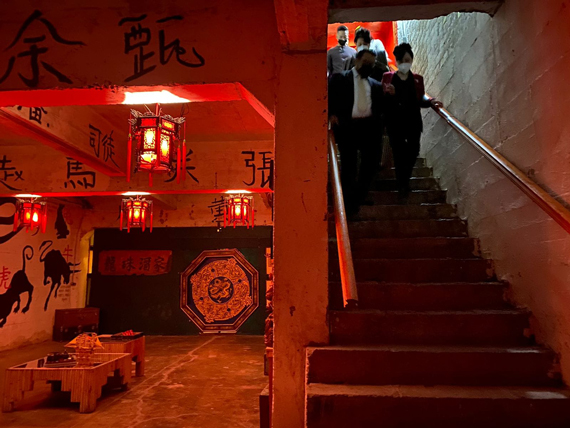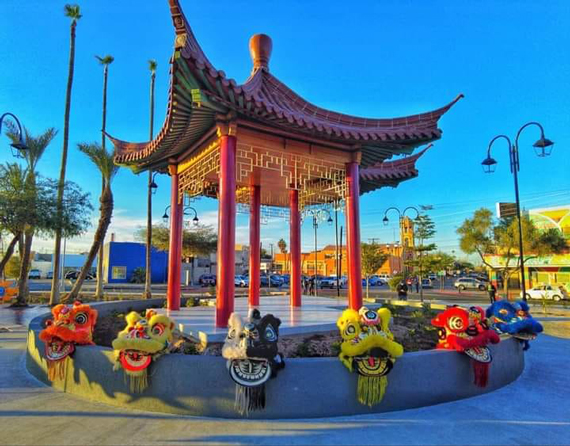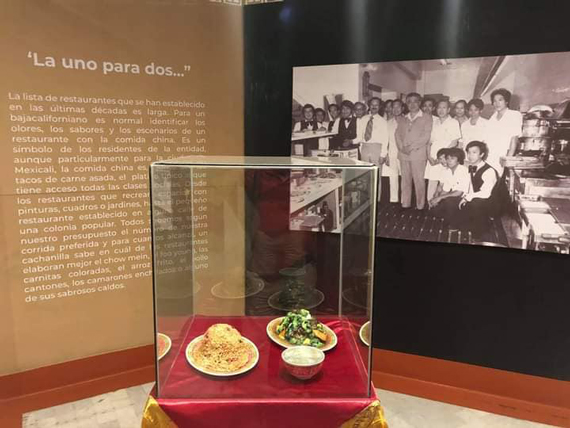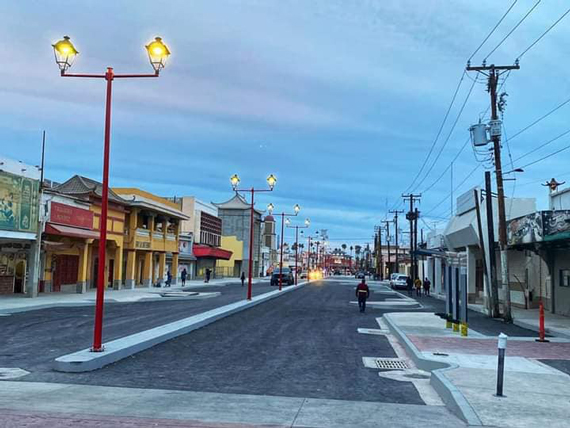|
Chinese Community Helps Preserve Mexicali
By Maria E Curry
March/April 2022
 A tour group arrives at the entrance to one of more than 40 historic basements in Mexicali. |
 A traditional pagoda at the entrance to La Chinesca in Mexicali. |
 Mexicali’s Wok Museum of Chinese cuisine, which is heavily influenced by Mexican food here. |
 Juarez Street in downtown Mexicali was recently remodeled. All photos courtesy of Maria Curry |
In recent years, Chinese residents of Mexicali, Baja California, with other preservation leaders, have been supporting the revitalization and preservation of the state capital’s historic center. The results in La Chinesca are emerging little by little, with buildings rehabilitated and facades enhanced with murals. Preservationists have added or refurbished street benches, lamps, informative historic signs, a kiosk, and a Chinese food museum.
More than 40 basements stretching one-and-a-half blocks form a matrix connected by tunnels. People lived and worked in these underground rooms to avoid the extreme heat, or used them for storage. The hidden rooms also allowed for illegal activities such as opium dens or bars and stills to provide alcohol to Calexico during prohibition, according to some historians. The tales of folklore and history told by guides have helped to make these basements tourist attractions.
Mexicali celebrated the Chinese New Year on February 2, 2022 with community festivities and events, which reminded us of their ancestors’ cultural influence in Baja California. The Chinese began arriving in the Imperial Valley region in the mid- to late-1800s to build the railroad and in the 1900s to work for the Colorado River Land Company creating an extensive irrigation system in the Mexicali Valley. Some came fleeing anti-Chinese policies in the United States or the poverty in their homeland.
Chinese residents shaped their presence in downtown Mexicali through businesses such as bars, restaurants, and hotels to serve American tourists in the 1920s. Even today, Mexicali Chinese restaurants are famous for their unique use of Mexican elements and flavors in their gastronomy.
Many sectors of Mexicali society support preservation efforts, support that is likely to extend to the whole historic core, as described in a strategic plan and a future cultural heritage designation proposal. An area eligible for recognition as a historic center covers 977,657 square meters, or about 90,860 square feet. It encompasses 54 blocks, 10 avenues, 12 alleys, one private street, and two service streets. The historic buildings that could be considered contributors include examples from the 1910s to the 1970s made of adobe, wood, and concrete in various styles (Craftsman, Art Deco, Art Moderne, Spanish Revival, and Modernist, to name a few). Walls bearing old painted signs and neon signs also could be added to the designation.
To date, only six examples have been declared cultural heritage sites in Mexicali: Escuela Cuauhtémoc (1916), Panteón Municipal No. 1 (1919), Escuela Leona Vicario (1923), Escuela Miguel Alemán (1952), Water tank “La Bombera” (1959), and Baja California Cuisine.
With the future designation of the historic center, this list could increase significantly, and preservationists in Mexicali and beyond would be the richer for it.
|
2025
2024
2023
2022
2021
2020
2019
2018
2017
2016
2015
|







